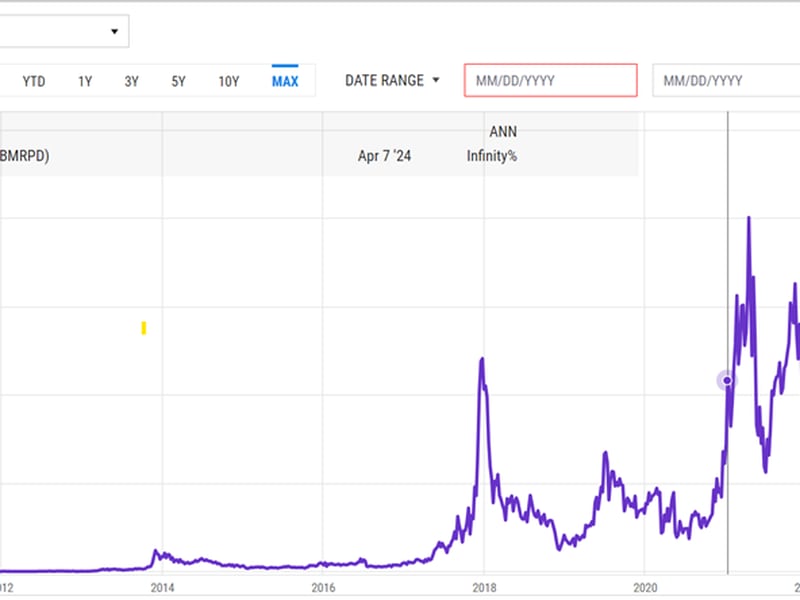Crypto Funds, Lending and Market Manipulation

Noelle Acheson is a veteran of company analysis and a member of CoinDesk’s product team. The opinions expressed in this article are the author’s own.
The following article originally appeared in Institutional Crypto by CoinDesk, a free newsletter for institutional investors interested in cryptoassets, with news and views on crypto infrastructure delivered every Tuesday. Sign up here.
It’s not easy being a crypto fund manager. As well as unruly markets and elusive valuations, there’s the increasing competition and pressure on fees. And performance has been lackluster: Vision Hill’s Q1 report showed that, on average, active funds have underperformed bitcoin so far this year.
The bear market of 2018 triggered the closure of many crypto funds, and a report released last week by PwC and Elwood Asset Management showed that there are far fewer active funds in existence than we had been led to believe.
The report also pointed out that, given a median management fee of 2% and a median fund size of $4 million, operational sustainability is tough: $80,000 recurring income is not enough to cover salaries and other overheads, especially given the likelihood of increasing compliance requirements.
The PwC/Elwood report mentions some steps that funds are taking to boost recurring income, such as market making and advisory roles.
It overlooks one potentially significant source of revenue, however: crypto lending. Funds could lend out the assets they hold, for a fee.
Given the growing demand for crypto lending services, this potential income stream could be enough to give a number of funds a greater chance of survival, as well as inject liquidity and diversity into the sector.
It could also, however, add hidden risk to the market overall.
Heading down
Before we look in more detail at this risk, let’s examine the trend toward lower fees.
According to the PwC/Elwood report, the median (mid-point) fee is 2%. This is in line with typical fees for “traditional” hedge funds. But there are signs that they are coming down. The report states that the average crypto fund fee is 1.72%, which means that many charge significantly less. This is also in line with the traditional sector, where fee pressure is already becoming the subject of headlines.
The pressure is even more acute in mutual and index funds, where fees are moving to zero or even lower. Last year, investment management giant Fidelity offered a mutual fund with no management charge. And earlier this month, the SEC greenlighted a fund from asset manager Salt Financial that promised negative fees.
Meanwhile, demand for crypto lending is growing at an astonishing pace, as the inflow of funds into lending startups and the demand from institutions shows. While there is no concrete data on the extent to which crypto funds lend out their assets, there are signs that this practice is spreading.
This has potential implications for the entire sector, both good and bad.
Heads up
On the positive side, increased lending of crypto assets could increase velocity and, by extension, price discovery as a greater number of transactions makes it easier for a market to express its views.
Furthermore, a growing demand for short selling, facilitated by asset lending, will to some extent enhance liquidity and help to develop a pool of natural buyers – all short sales have to be unwound eventually. This develops a “soft” floor for an asset price.
But “more liquid” does not necessarily mean “liquid,” and here is where the risk of market manipulation could seep in.
Let’s say I manage a crypto fund that has invested in altcoin A, and let’s say that I lend out part of my stake to counterparty A. In traditional finance, most securities loans can be recalled at any time – let’s assume that I can do the same here. I recall the loan of altcoin A, and counterparty A has to scramble to get it back to me. Whether counterparty A used the loan to sell short or lent it on to counterparty B, it will now have to buy the asset back in the market, probably pushing up the price by doing so.
Now, what if I knew that would happen, and used the recall as part of a strategy to boost my fund valuation? True, I probably couldn’t lock in the profit by selling altcoin A without pushing the market back down, but it could serve to fix a higher value on a certain date, which would boost my reported performance, which in turn could encourage more investment in my fund.
Plus, there’s the added benefit of knowing that the short sellers got squeezed, and the glory of my outperformance compared to those with a more negative outlook.
Obviously, if I got a reputation for doing this, no-one would borrow from me. And the drying up of that revenue stream could mean that I may end up having to liquidate my fund – just imagine what my dumping all of my altcoin holdings on the market (after recalling all loans) would do to other funds’ valuations.
Eyes open
One solution could be for investors to insist that the funds they back do not engage in this type of lending activity. But, given the difficulty of covering costs with declining management fees, that could make it less likely that compliant funds survive. And if the returns from lending boost fund performance, am I not obliged to seek the best possible return for my investors? Most investors in crypto hedge funds are themselves institutions, who are also judged by their performance. There is for now little incentive to insist on curbs on lending.
Regulation could come in and establish rules over transparency and oversight, as is happening in traditional finance. But regulators are still getting their heads around the crypto space, and are doing so at a cautious pace.
In the absence of clear rules, it is up to the sector to keep an eye on developments in both crypto fund administration and crypto asset lending. It is, after all, in its own interest to ensure a smooth and robust market.
But self-regulation has its own risks and is hard to execute in as opaque an activity as crypto asset lending. True, blockchain-based transactions are available for all to see – but most crypto asset lending is likely to take place off-chain, as an agreement between two parties.
However, letting the practice spread without some guidance could escalate systemic risk. As the traditional markets saw in 2008, the intertwined web of asset holdings through through opaque lending arrangements left institutions vulnerable and investors grasping at air.
Crypto markets have enough hurdles to overcome to reach mainstream acceptance. We shouldn’t let hidden risks that develop in front of our very noses to be one of them.
Lending image via Shutterstock










